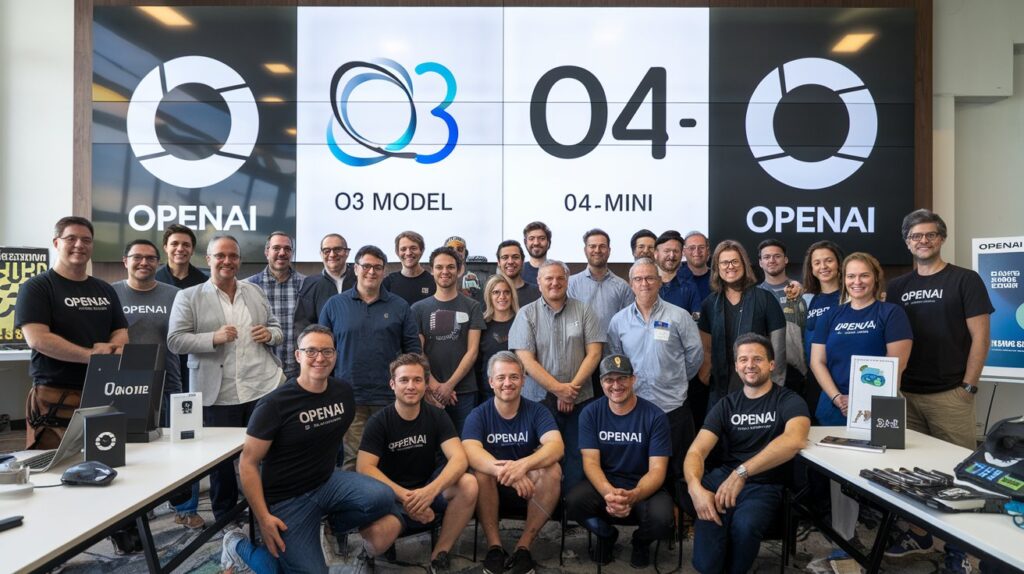
OpenAI continues to innovate with the launch of two exciting new AI models: the OpenAI O3 model and the OpenAI O4-Mini. These models allow AI to make AI reasoning smarter and more human-like. The OpenAI O3 model is a more advanced version, while the O4-Mini is a smaller, compact version with similar capabilities but designed for lighter tasks. In this blog, we’ll learn about all the new features of AI reasoning models how they can be used to solve real-world problems. We’ll also compare O3 vs O4-Mini to help you understand the differences and decide which model suits your needs best. Whether you are the creator or a business owner, you can take advantage of these new AI models.
What is the OpenAI O3 Model?

The OpenAI O3 model is one of the latest advancements in AI reasoning technology. It is designed to push the limits of AI in how to processes information and makes more human decisions. This model is part of OpenAI’s broader goal to create AI systems that can reason more like humans, understanding complex ideas and solving intricate problems.
Introduction to OpenAI O3 Features
The OpenAI O3 model introduces several key features that make it stand out:
Advanced reasoning abilities: The O3 model can understand multi-step problems and arrive at solutions that require deeper thought and analysis. This makes it more capable of tackling real-world challenges that involve logic, deduction, and understanding context.
Enhanced accuracy: With its improved architecture, the O3 model delivers more accurate responses compared to earlier models, particularly in complex reasoning tasks.
Scalability: It is designed to handle large datasets and diverse types of input, making it a versatile tool for a wide range of applications.
Use Cases and Target Audiences for O3 The OpenAI O3 model is perfect for industries and people who need advanced reasoning:
Software developers: Use O3 in your apps to improve user experience, automate tasks, and make smarter decisions.
Business people: Use O3 for data-driven decisions, strategic planning, and predictive analytics on big, complex data.
Academics and researchers: Use O3 to research by analyzing patterns, generating hypotheses, and interpreting large datasets to find insights.
Medical professionals: Use O3 to analyze medical histories, diagnose, and recommend treatment plans based on all the data.
The OpenAI O4-Mini: A Compact Powerhouse

The OpenAI O4-Mini is a smaller, more efficient version of the O3 model, created for tasks that don’t need heavy processing power. It may be “mini” in size, but it still delivers smart, reliable performance, especially for lighter workloads. The O4-Mini capabilities include solid reasoning, quick response times, and low resource usage, making it ideal for everyday AI tasks. Compared to the OpenAI O3 model, the O4-Mini is faster and easier to run, especially in applications where speed and resource efficiency matter more than heavy reasoning.
This model is a great fit for industries like customer support, smart assistants, mobile apps, and education tools, where quick, intelligent answers are needed but heavy processing isn’t necessary. For developers and businesses looking for a balance between performance and efficiency, the OpenAI O4-Mini offers the ideal solution.
O3 vs O4-Mini: A Comparative Look
The OpenAI O3 model and O4-Mini serve different purposes, even though both are built for AI reasoning. The O3 model is the more advanced option, offering stronger performance when it comes to deep reasoning, context understanding, and handling complex tasks. It’s best suited for heavy AI applications such as research tools, in-depth content generation, or high-level data analysis. On the other hand, the O4-Mini focuses on speed and efficiency. While it may not match O3 in depth, it performs well for lighter tasks and runs faster on less powerful systems.
When choosing between them, it depends on the use case. If your project requires deep reasoning, complex problem-solving, or long-form content generation, the OpenAI O3 model is the better choice. If you need quick, smart responses for mobile apps, chatbots, or lightweight tools, O4-Mini is more practical.
O3 Pros: Strong reasoning, accurate results, great for complex use cases.
O3 Cons: Slower and requires more computing power.
O4-Mini Pros: Fast, efficient, easy to use in lightweight systems.
O4-Mini Cons: Less capable in handling detailed or complex tasks.
So, if you’re doing a detailed OpenAI AI model comparison, O3 is better for depth and precision, while O4-Mini is great for speed and simplicity.
Why OpenAI’s New Models Matter
The launch of the OpenAI O3 model and O4-Mini shows just how far OpenAI’s reasoning AI has come. These models are not only faster and more efficient—they’re also much better at understanding complex problems, making logical decisions, and responding in smarter ways. This improvement in AI reasoning helps AI become more useful across different fields and everyday applications.
By pushing the boundaries of logic and decision-making, these models open up new possibilities in how AI can be used—from personalized education and healthcare tools to smarter business insights and creative support. As part of the New OpenAI models 2025, they represent a future where AI isn’t just fast—it’s thoughtful, reliable, and more aligned with real-world needs. This shift could reshape industries and how we interact with technology every day.
Practical Applications of the OpenAI O3 Model

The OpenAI O3 model is built for more than just smart answers—it’s designed to help solve real problems in useful ways. Thanks to its strong AI reasoning abilities, it can understand complex situations, think through them, and give helpful, accurate responses.
Businesses can use the O3 model for tasks like analyzing data, making better decisions, and automating customer support with smarter chatbots. Educators can use it to create learning tools that explain tough topics clearly or offer personalized study help. Tech developers can build apps that require deeper thinking, like virtual assistants or research tools.
Overall, the OpenAI O3 applications are perfect for anyone who needs reliable, intelligent, and thoughtful AI support in their work.
Conclusion
The OpenAI O3 model and O4-Mini show how fast AI is improving. These models are smarter, faster, and better at understanding and solving real problems. Whether you need strong reasoning for complex tasks or a light, efficient model for quick responses, OpenAI has a solution.
As part of the new OpenAI models 2025, both O3 and O4-Mini can help businesses, students, developers, and more. They mark a big step forward in making AI more useful, practical, and easier to use in everyday life.








